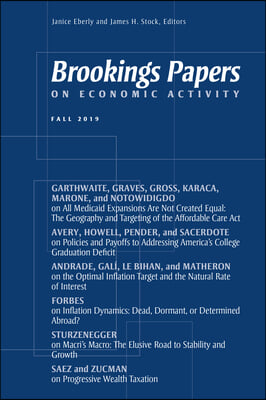冠状病毒大流行对新兴市场和发展中经济体的影响:乐观的初步描述
IF 2.8
3区 经济学
Q1 ECONOMICS
引用次数: 37
摘要
摘要:2020年初,人们普遍预计新冠肺炎疫情对发展中国家的公共卫生和经济影响将比发达经济体更严重。截至2020年7月的初步证据支持一种更为乐观的评估。迄今为止,大多数低收入和中等收入国家的人均死亡人数明显低于富裕国家,这种模式可以部分解释为人口年轻化和肥胖程度有限。在经济方面,新兴市场和发展中经济体(emde)出现了大规模资本外流和某些大宗商品(特别是石油和非贵金属)价格大幅下跌,但净资本外流与早期大宗商品价格冲击一致。虽然具体国家在短期和中期受到的影响存在相当大的差异,但我们谨慎乐观地认为,最大的新兴市场发展中国家,特别是那些不依赖能源和金属出口的国家的金融市场可能会迅速复苏——假设这些国家的疾病负担最终不那么严重。从长期来看,最高的成本可能是由于病毒遏制政策对贫困、健康和教育的间接影响,以及加速去全球化对新兴市场和发展中国家的影响。一个重要的警告是,大流行的未来进程和新一波感染的后果仍然存在相当大的不确定性。本文章由计算机程序翻译,如有差异,请以英文原文为准。
The Effects of the Coronavirus Pandemic in Emerging Market and Developing Economies: An Optimistic Preliminary Account
ABSTRACT:Early in 2020, the general expectation was that the coronavirus pandemic's effects would be more severe in developing countries than in advanced economies, on both the public health and economic fronts. Preliminary evidence as of July 2020 supports a more optimistic assessment. To date, most low- and middle-income countries have a significantly lower death toll per capita than richer countries, a pattern that can be partially explained by younger populations and limited obesity. On the economic front, emerging market and developing economies (EMDEs) have seen massive capital outflows and large price declines for certain commodities, especially oil and nonprecious metals, but net capital outflows are in line with earlier commodity price shocks. While there is considerable heterogeneity in how specific countries will be affected in the short and medium run, we are cautiously optimistic that financial markets in the largest EMDEs, especially those not reliant on energy and metal exports, could recover quickly—assuming the disease burden is ultimately not as dire in these countries. In the long run, the highest costs may be due to the indirect effects of virus containment policies on poverty, health, and education as well as the effects of accelerating deglobalization on EMDEs. An important caveat is that there is still considerable uncertainty about the future course of the pandemic and the consequences of new waves of infections.
求助全文
通过发布文献求助,成功后即可免费获取论文全文。
去求助
来源期刊

Brookings Papers on Economic Activity
ECONOMICS-
CiteScore
10.10
自引率
0.00%
发文量
12
期刊介绍:
The Brookings Papers on Economic Activity (BPEA) is a semi-annual academic conference and journal that pairs rigorous research with real-time policy analysis to address the most urgent economic challenges of the day. Working drafts of the papers are presented and discussed at conferences typically held twice each year, and the final versions of the papers and comments along with summaries of the general discussions are published in the journal several months later. The views expressed by the authors, discussants and conference participants in BPEA are strictly those of the authors, discussants and conference participants, and not of the Brookings Institution. As an independent think tank, the Brookings Institution does not take institutional positions on any issue.
 求助内容:
求助内容: 应助结果提醒方式:
应助结果提醒方式:


